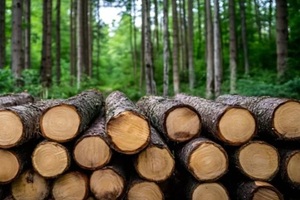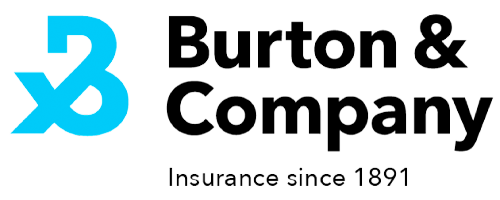
Timber operations experience a distinct combination of financial and operational challenges that can threaten profitability at any moment. Between unpredictable weather events, equipment failures, and liability concerns, logging and forestry businesses need more than just sound management practices. They need the safety net that forestry insurance provides.
For timber operators in Virginia and across the country, the right insurance strategy isn’t just meeting legal requirements. It’s focused on safeguarding your investment, protecting the well-being of your workforce, and maintaining your operations during times of crisis.
This guide breaks down the types of forestry insurance available, the risks they address, and how to determine which coverages are most suitable for your operation.
The Reality of Risk in Timber Operations
The forestry industry operates under constant exposure to hazards that most businesses never even have to consider. Family forest landowners and timber operators manage their businesses under multiple “acceptable” risks, including fluctuating timber prices, pest damage, liability issues, and harvest restrictions.
From 1980 to 2012, the southern United States experienced 36 extreme weather events, each causing property damage exceeding $1 billion. A single 2014 tornado caused over $14 million in timber damage alone.
Risk types also change throughout a forest’s life cycle. Drought and fire risks peak early in pine plantations, while wind and ice damage become more likely as timber matures.
What Forestry Insurance Covers
Forestry insurance consists of a variety of specialized coverages customized to manage specific risks associated with timber operations, rather than being a single policy.
Standing Timber Insurance
This coverage protects mature timber that’s ready for harvest or is nearing readiness. Standing timber insurance typically covers specific perils, including fire, lightning, windstorm, ice, and theft. For operators who are financially dependent on pending timber income, this type of policy can prevent a devastating loss. Premiums generally range from 0.5% to 1.5% of the standing timber value per peril covered.
Pro-Tip: While premiums can make standing timber insurance cost-prohibitive over the entire life of a forest, short-term coverage for high-value mature timber often makes financial sense.
Reforestation Insurance

Reforestation insurance specifically pertains to pre-merchantable stands and provides coverage for replanting expenses in the event of catastrophic fires or wind events. Rather than insuring the value of young trees, this policy helps operators absorb the cost of starting over after a loss.
Coverage levels typically range from $125 to $250 per acre, with annual premiums ranging from $1.20 to $1.50 per acre. A qualified loss occurs when fewer than 40 percent of the planted trees survive an event.
General Liability and Equipment Coverage
Beyond timber-specific policies, forestry operations need standard business coverages, including general liability, commercial auto, and equipment insurance. These policies protect against third-party injuries, property damage, and the high costs associated with repairing or replacing specialized logging equipment.
Planning Risk Management Beyond Insurance
While forestry insurance provides financial protection, effective risk management starts with innovative operational practices. Various forestry management strategies can reduce or intensify the effects of risk factors.
For example, thinning timber can reduce future risks from insects and fire, but it temporarily increases vulnerability to wind and ice damage.
Timber management objectives should support strategic goals to foster resilient, adaptive ecosystems, mitigate wildfire risk, and strengthen communities. Proper planning helps operators balance these competing considerations while protecting their investments.
Is Forestry Insurance Right for Your Operation?
The decision to purchase forestry insurance depends on several factors specific to your operation and financial situation. Consider these questions:
For Standing Timber Insurance:
- Is there room in your budget for premium payments?
- Do you need protection for only a short period before harvest?
- How dependent are you on timber revenue for retirement or major expenses?
- Are you managing timber in a fiduciary capacity where beneficiaries expect insurance coverage?
For Reforestation Insurance:
- Do you have newly planted or young pine plantations?
- Are you particularly concerned about wind or fire damage to young stands of trees?
- Can you afford the establishment costs if you need to start over?
Large-acreage private landowners often reduce risk through diversification, spreading holdings across multiple counties and maintaining timber stands in different age classes. Small family forest landowners typically don’t have this option. When your timber is concentrated in one parcel, insurance becomes a more attractive risk management tool.
Burton & Company: Your Forestry Insurance Solution
Forestry insurance requires detailed underwriting information that many standard business insurance agents don’t understand. Applications typically require forest management plans, detailed timber inventories, property descriptions, and specific data about your operation’s risk factors.

Burton & Company has been serving businesses in Virginia since 1891, and we understand the distinct challenges timber operators encounter. Our team takes the time to learn about your operation, assess your specific risk exposure, and recommend coverage that actually fits your needs and budget. We work with carriers who specialize in timber industry risks, so you receive protection customized to the realities of forestry operations.
Whether you’re managing a mature stand approaching harvest, protecting a newly planted pine plantation, or securing liability coverage for your logging crew, we’ll help you develop a risk management strategy that enables you to focus on growing your business rather than worrying about what could go wrong.
Your timber investment represents years of patient management and significant capital. Let us help you protect it. Contact Burton & Company online or call (888) 652-1325 to discuss your forestry insurance needs with an experienced agent who knows the timber industry.

